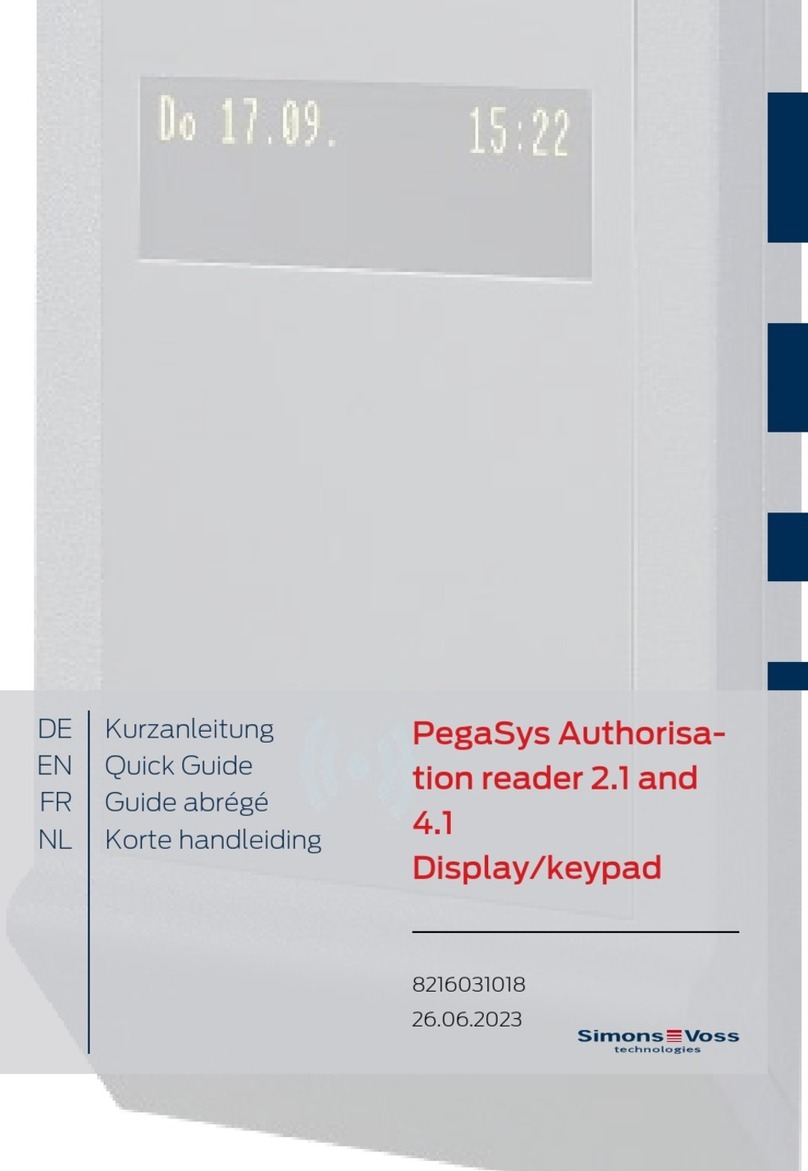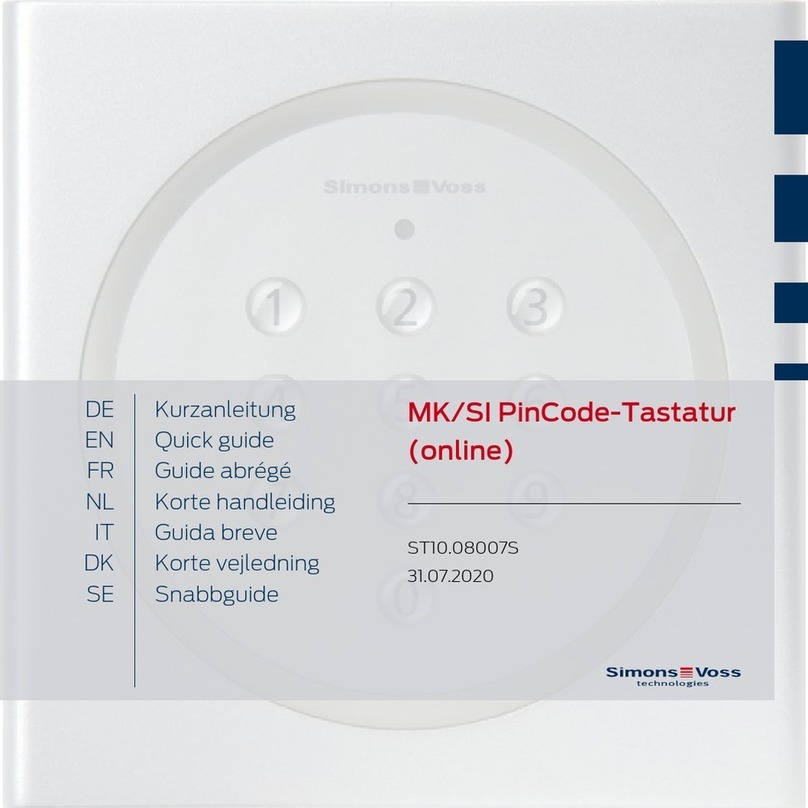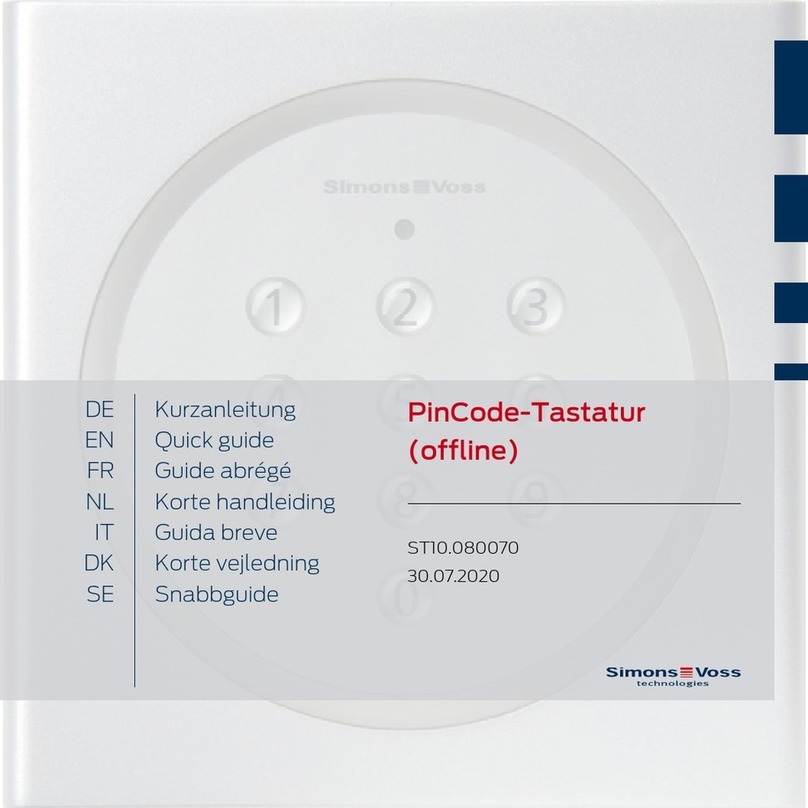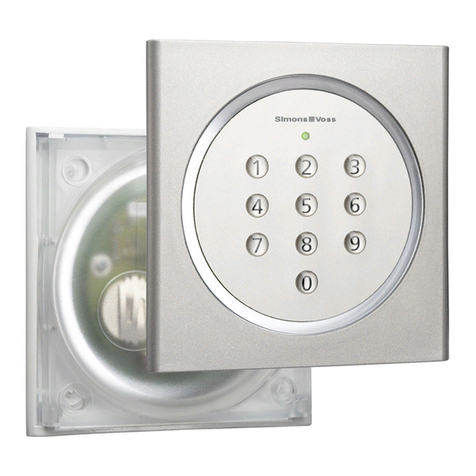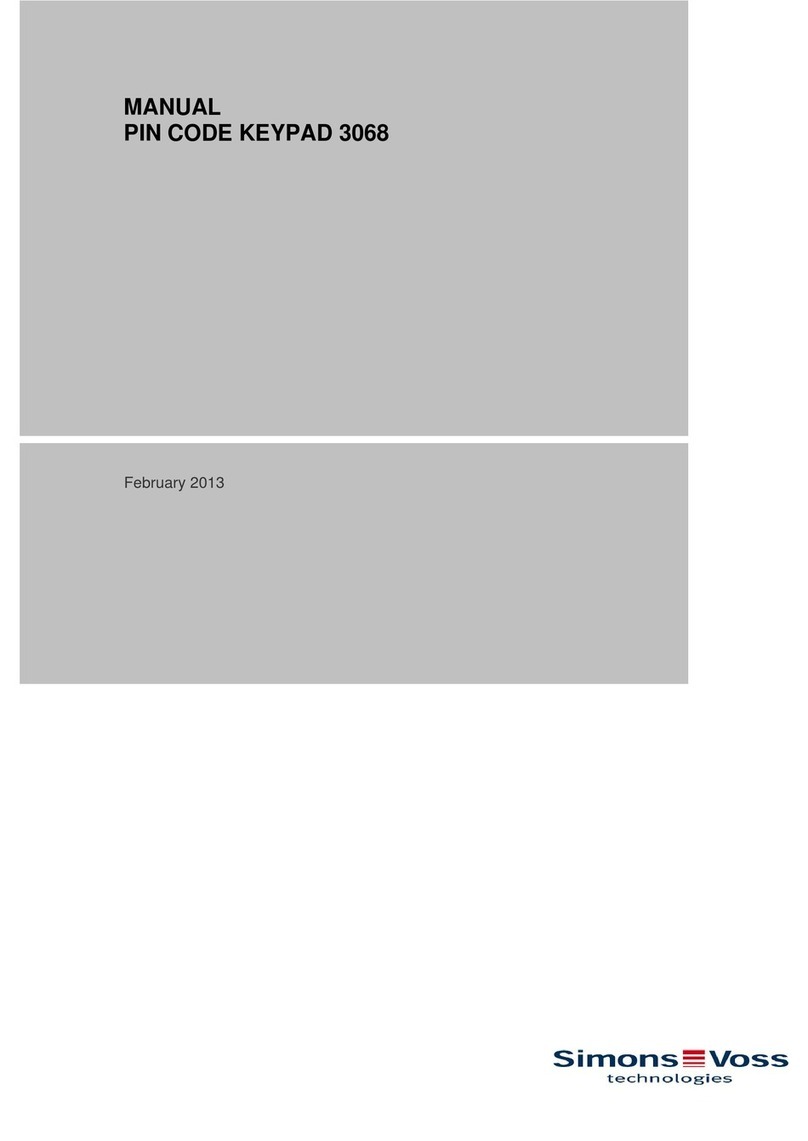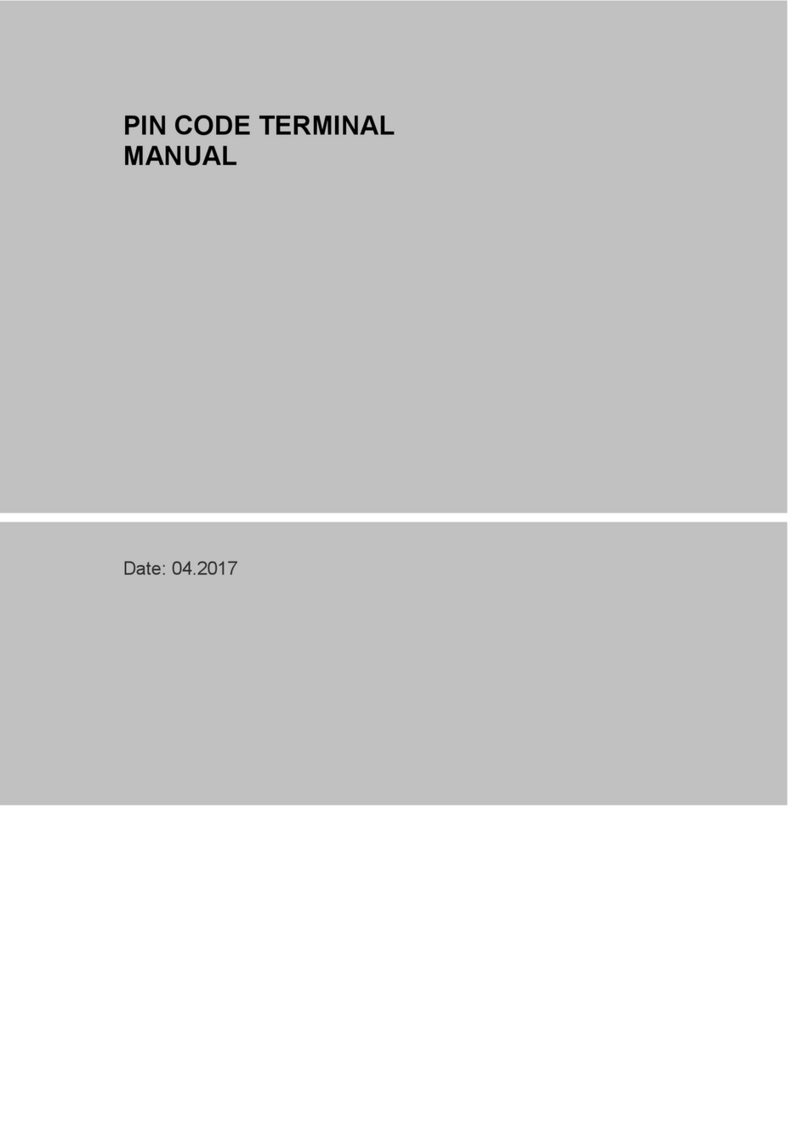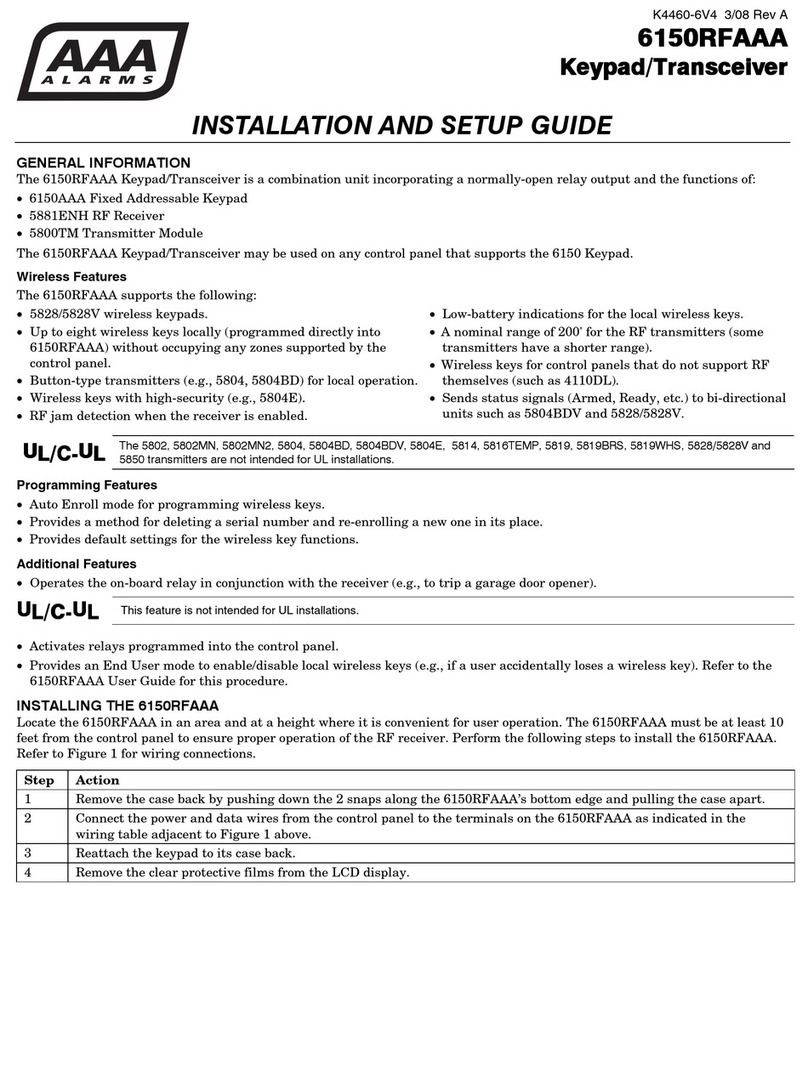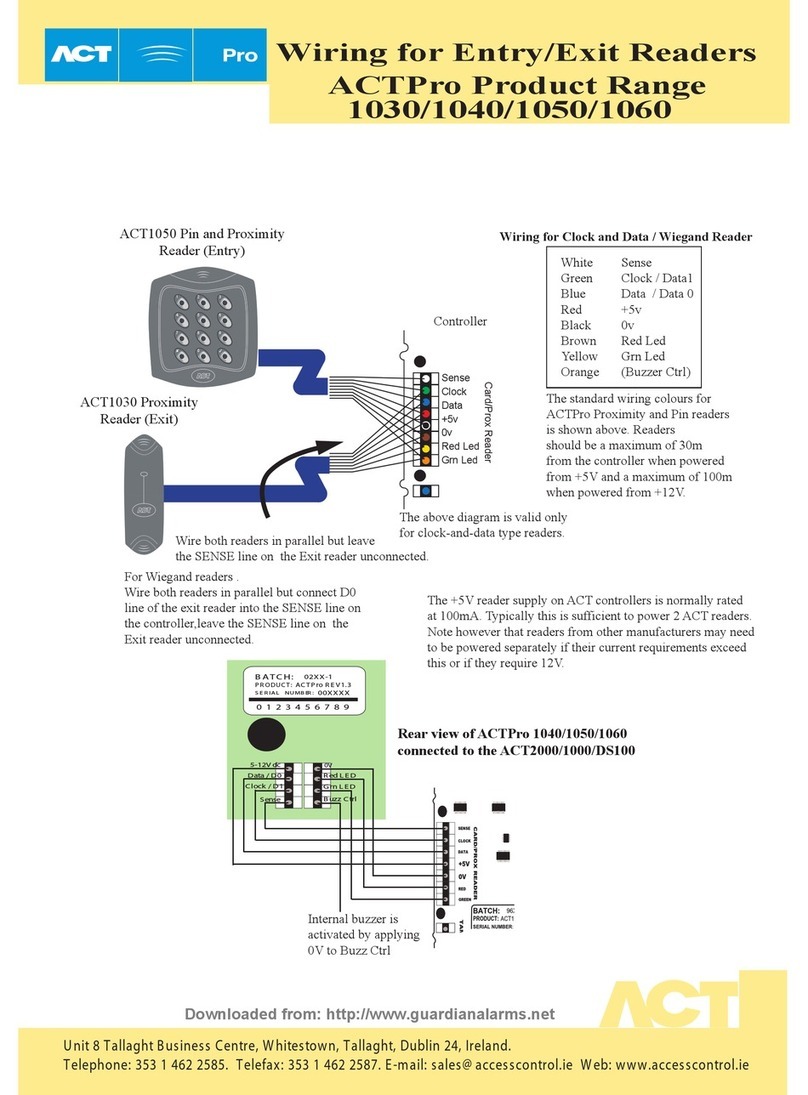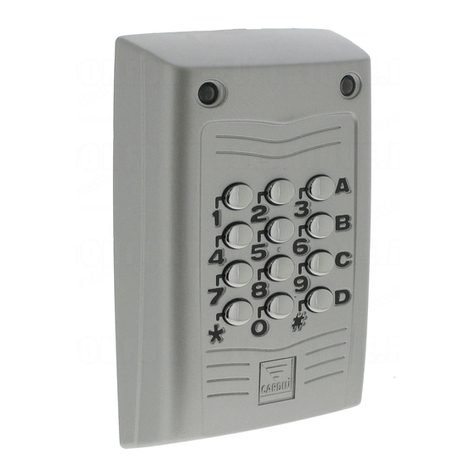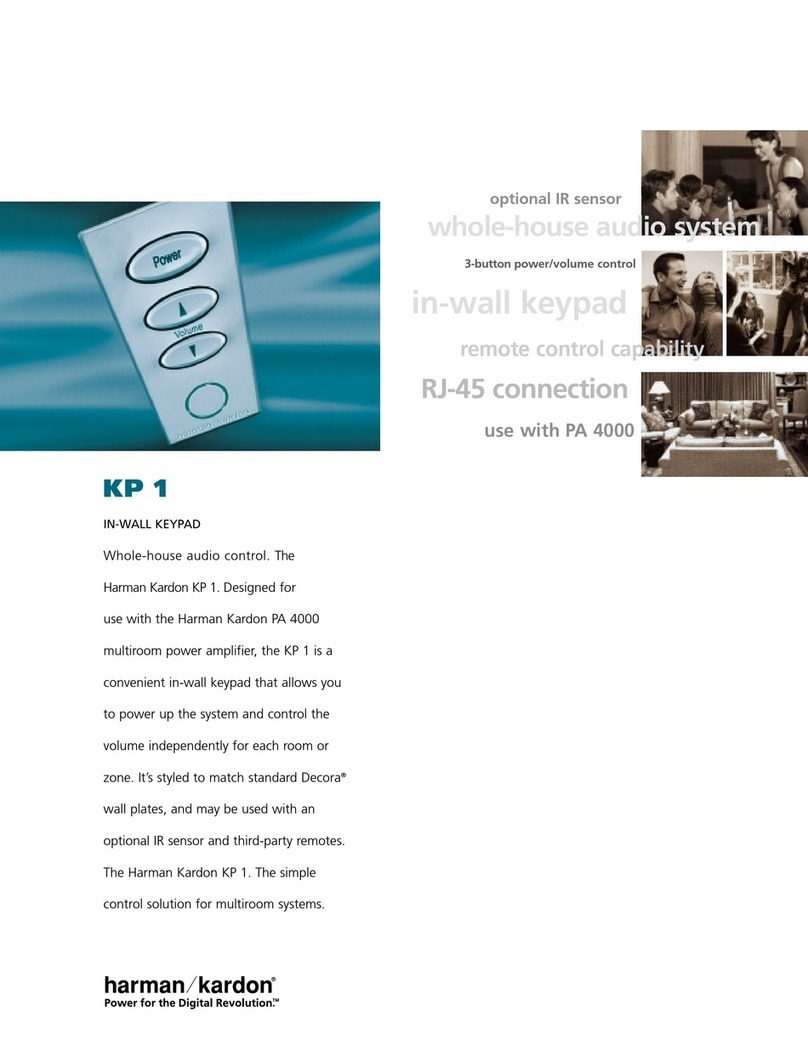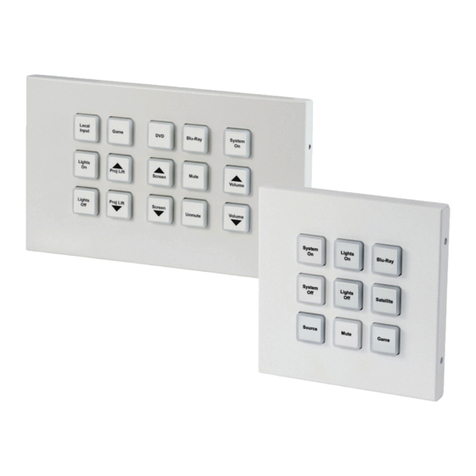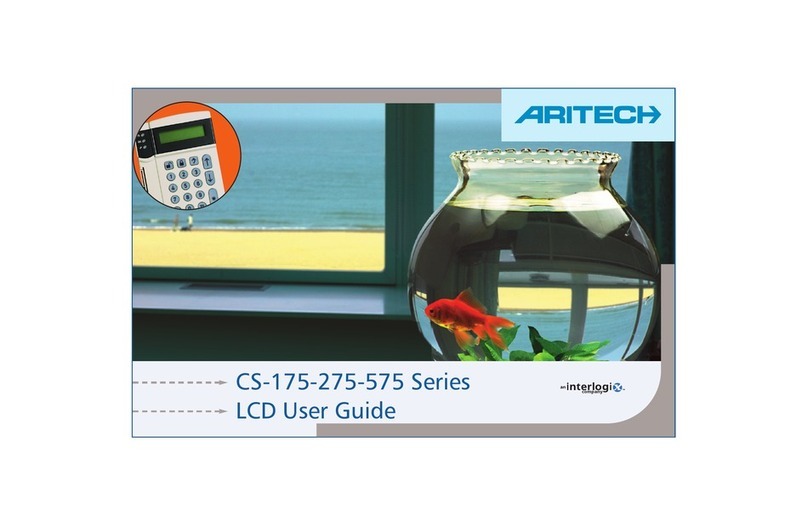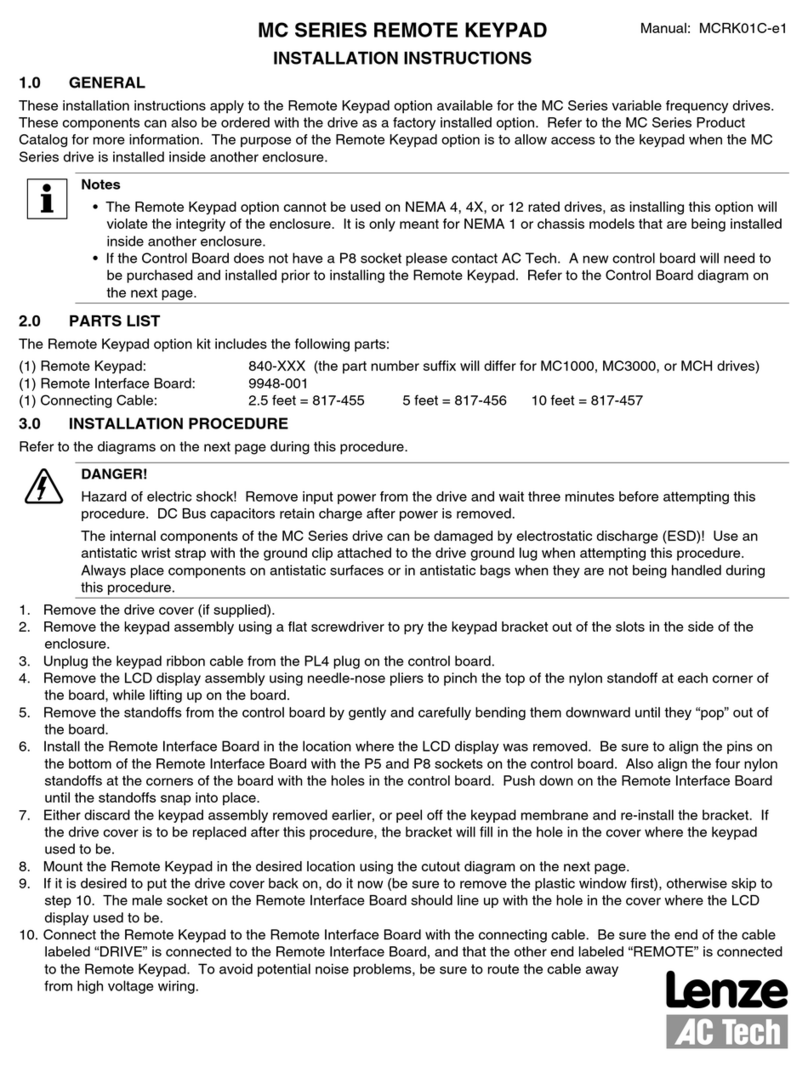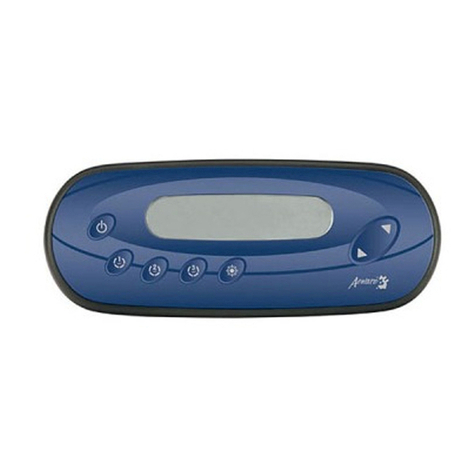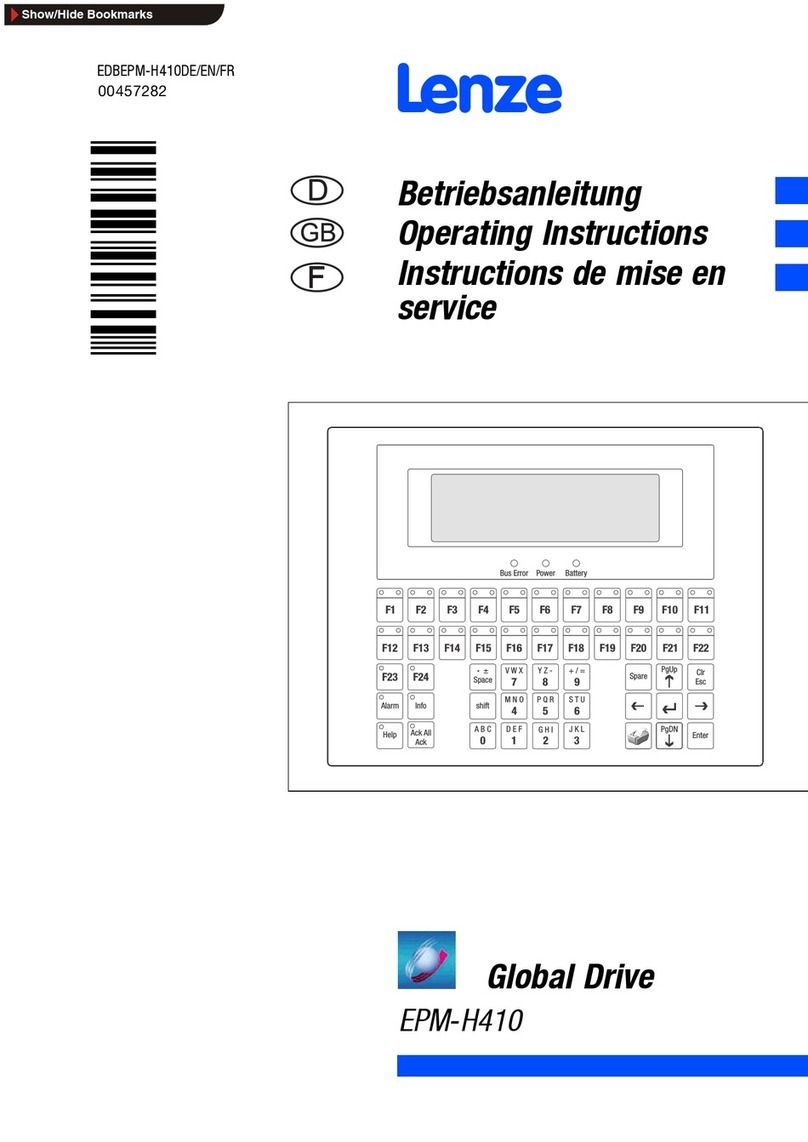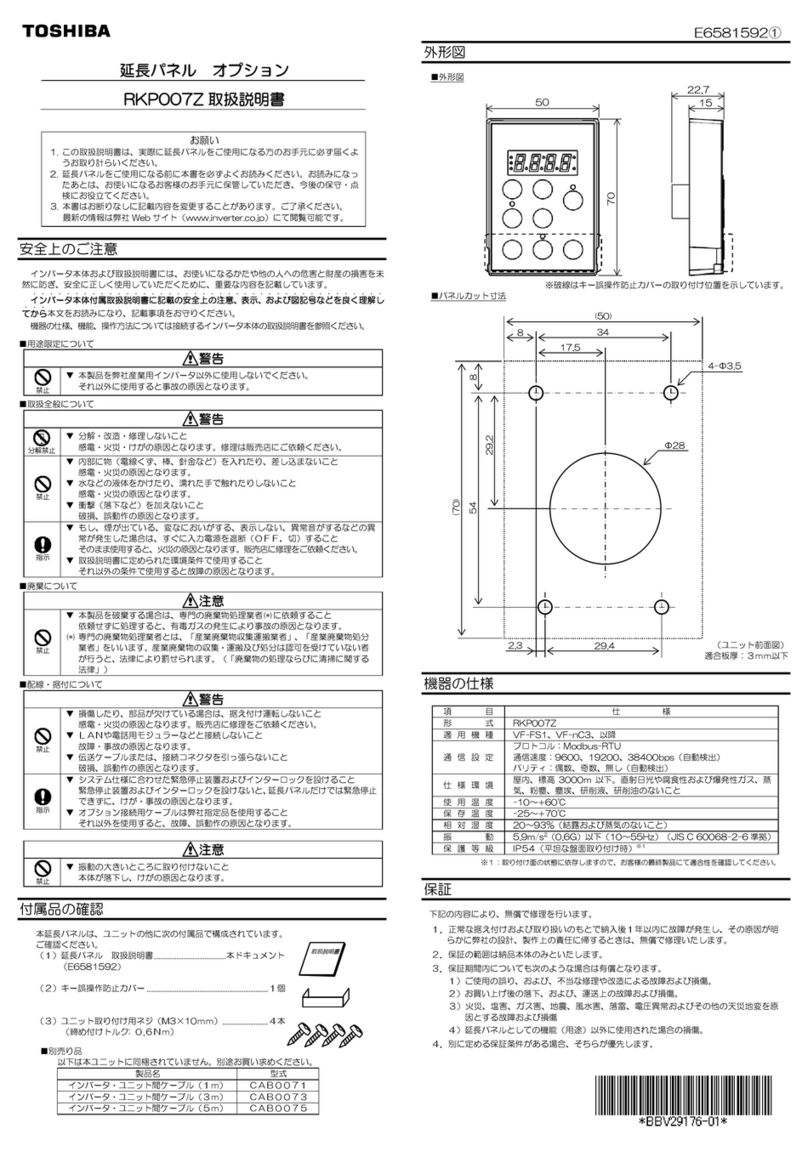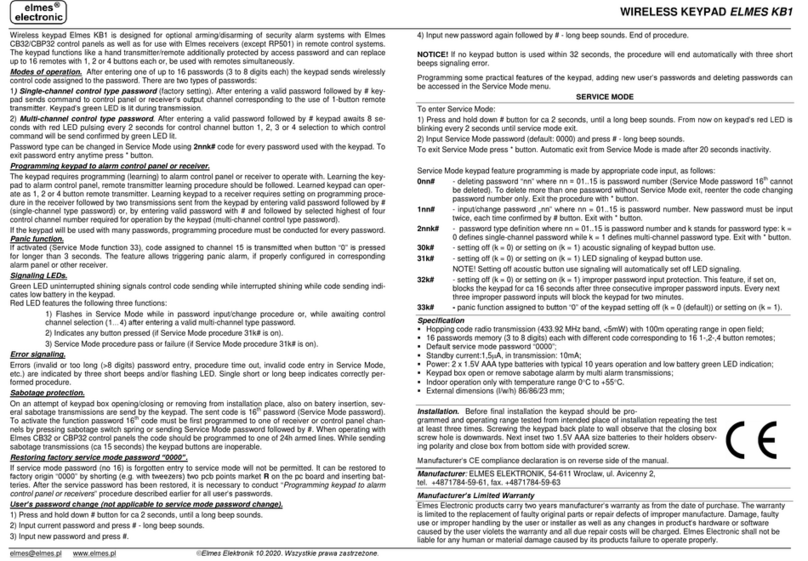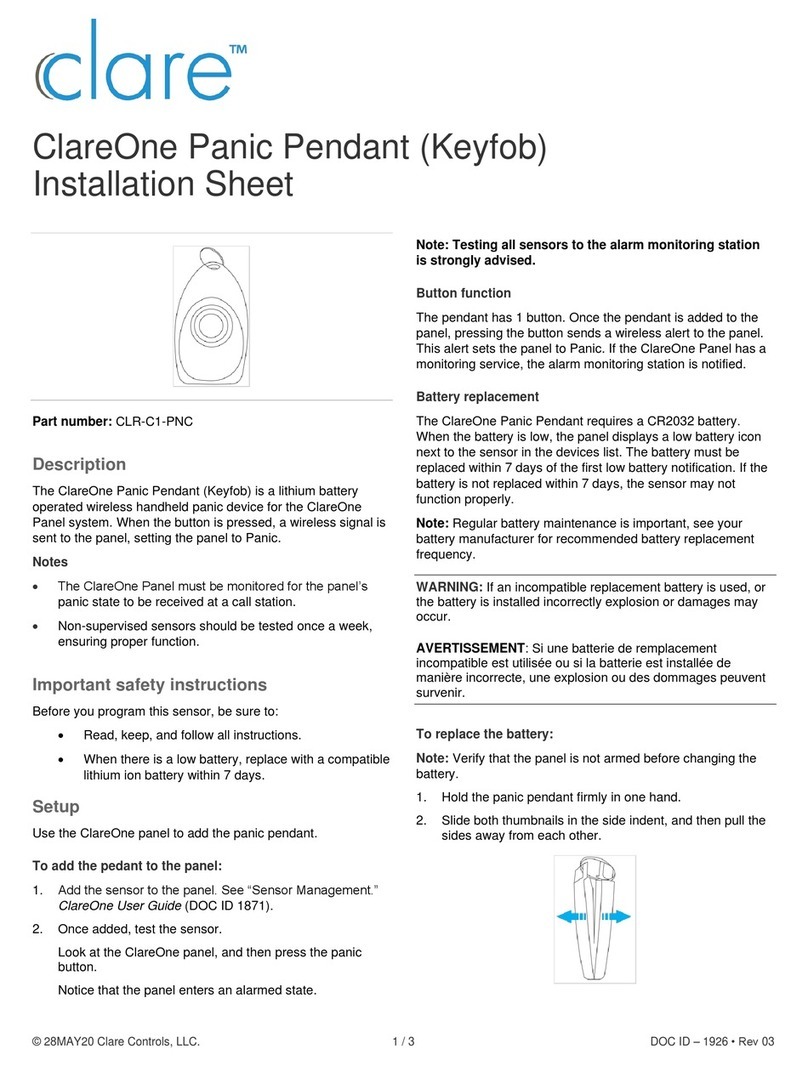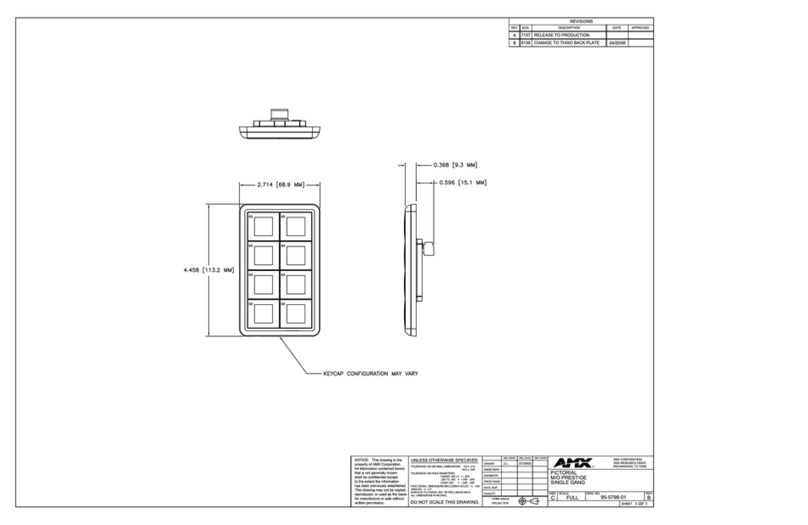
2 How it works
The PIN code keypad is a digital key that opens SimonsVoss locking
devices via radio once the correct PINs have been entered. The PIN code
keypad uses one of the three integrated transponders for this purpose.
To configure the system, at least one PIN must be programmed (see
Programming PINs [}10]
)) and the associated integrated transponder
must be programmed to match the desired locking device (see
Programming the transponders [}13]
).
The PIN code keypad is IP65 protected and therefore also suitable for
outdoor use. Due to the battery supply, it can be installed wirelessly
independently of existing power connections. It can be programmed with
the LSM software and used seamlessly in the System 3060.
2.1 Overview
The PIN code keypad consists of two components:
PIN code input field with evaluation
Integrated transponders
If the PIN entered in the input field is recognised as correct, the input field
triggers the corresponding integrated transponder.
With the PIN code keypad, you can operate all SimonsVoss locking devices
(such as SmartRelays, cylinders, SmartHandles and activation units, etc.)
with the PIN code keypad at any time. You can create up to three
independent user groups. If you carry out a reprogramming that only
affects one user group, you only have to inform this user group.
If you use SimonsVoss locking devices with ZK function (access and time
zone control), you can also grant a person or user group temporary rights to
the locking device. You can also log which PIN was used when to operate a
locking device.
You can operate the same locking device with different User PINs. Since
you give each user group a different User PIN, you can grant the user groups
different access rights.
Conversely, it is not possible to control different locking devices with the
same PIN code keypad via different User PINs, as the signal is sent to all
locking devices simultaneously. This does not ensure that the locking
device that matches the User PIN entered is addressed. In this case, the
locking device is not operated although the correct User PIN has been
entered.
2.2 Operating modes
The PIN code keypad differentiates between four operating modes.
PinCode Keypad (Manual) 2. How it works
5 / 28
